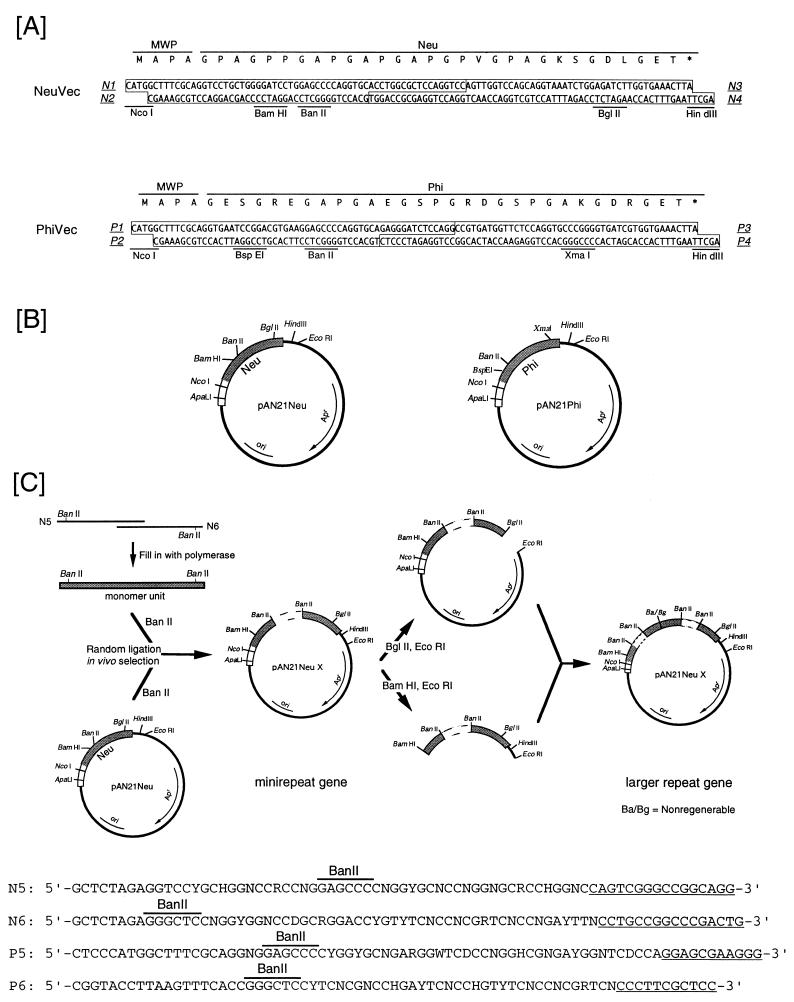FIG. 1.
Construction of plasmids to oligomerize an artificial gelatin unit. (A) Nucleotide and amino acid sequences of the artificial gelatin unit. The gene was designed with reference to the codon usage for cell wall proteins of B. brevis (16). The gelatin unit was in frame following the MWP signal peptide. The oligonucleotides synthesized are boxed and major restriction sites are indicated. (B) The plasmids for oligomerizing the artificial gelatin unit. The open and shadowed bars denote the signal sequence region of the MWP gene of B. brevis 47 and the structural gene for an artificial gelatin, respectively. Apr and ori represent the ampicillin resistance gene and replication origin, respectively. (C) Schematic diagram of the construction of a tandemly repeated gene. First, a pair of oligonucleotides, N5 and N6, was annealed, and then the rest of the bases were filled in with polymerase to synthesize a monomer unit. Second, minirepeat genes were obtained by ligating the monomer unit at random and in vivo selection. Third, larger repeat genes were constructed by connecting the minirepeat genes step by step. Dashed bars indicate the repeats of the artificial gelatin unit. X, the number of repeat units. The exact sequences of N5 and N6 and P5 and P6 are indicated below the figure.

